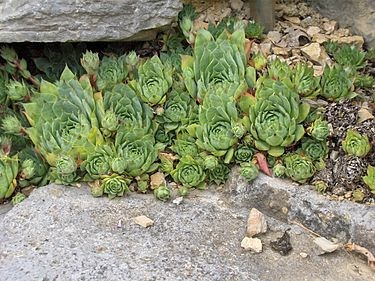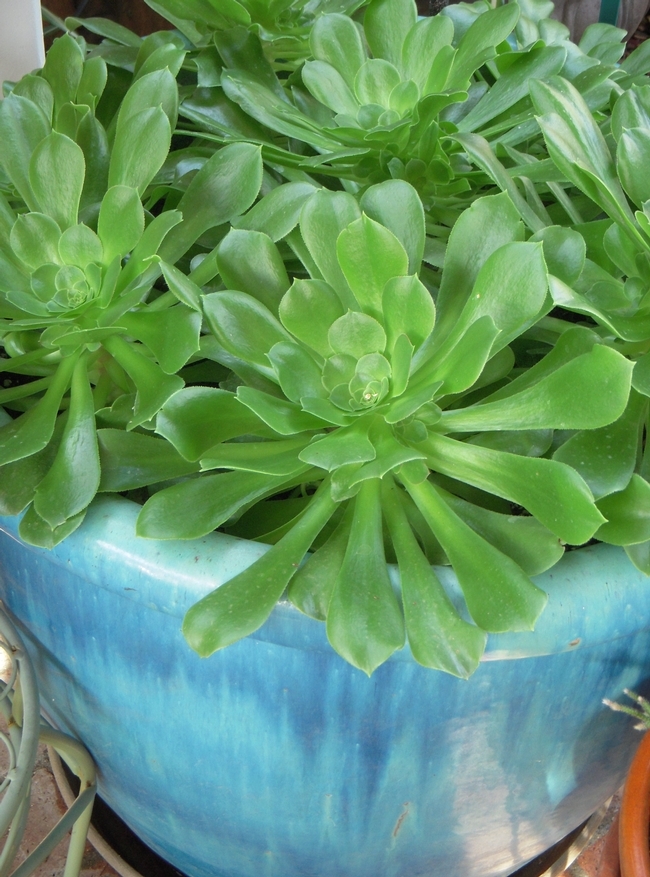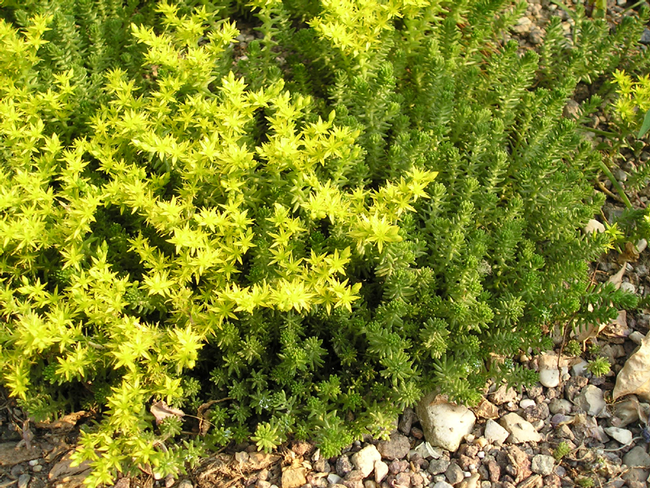By Barbara Ott, UC Butte County Master Gardeners, August 25, 2017.

Succulents are one of the easiest plants to propagate. This can be done in a variety of ways: by removing “pups” or offsets, or through leaf cuttings, stem cuttings or divisions. Propagation is performed most successfully in autumn and spring. Although succulents are easy to propagate, some will take a year or more to become mature.
Offsets are small plants that grow at the base of the main specimen. Aloe, Echeveria, and Sempervivum (hens and chicks) all produce offsets. To propagate more plants from a mature offset-producing specimen, follow these steps:
1) Remove offsets with a sharp clipper, or by twisting gently.
2) Be careful to avoid damaging any roots that have already emerged.
3) Place the offsets into cactus mix or a combination of sand and perlite.
4) Spray water directly, but gently and sparingly, on the offset daily. Do not soak the soil.
5) Wait three to four weeks for strong roots to develop.
Sedum, Crassula, and Graptopetalum are best propagated by leaf cuttings. Each leaf can become a new plant. For propagating these species, follow these steps:
1) Choose a leaf in good health.
2) Pull the leaf off neatly. Leaves that drop from the plant can be used if they are healthy and plump. If you use clippers be sure the end of the leaf is not cut off.
3) Let the leaf end dry for 1-3 days. Do not water. This allows the wound to seal and keeps pathogens out during the rooting process.
4) Once the leaf ends are dry, place the leaves on top of dry cactus soil. Do not bury or semi-bury them into the soil. The roots will find their way into the soil on their own. You can also create a rooting medium by mixing together a 50/50 combination of compost and fine pumice or grit.
5) Spray with water sparingly every one to two days for four to six weeks. Do not soak.
6) After a few weeks you will see pink roots at the ends of the leaves and then tiny baby plants will begin to grow.
7) Once small plants have developed, separate them out and plant them in well-draining cactus soil, then water well once a week.
All succulents can be propagated by division or stem cuttings, but it is more efficient to divide or stem cut Aeonium, Sedum, Cotyledons and Sansevieria, as follows:

2) Let all the parts dry out and create a callous where they have been cut.
3) Once they are dry, put the sections into cactus soil.
4) Spray on top of the cuttings regularly but sparingly. Do not soak.
5) They are rooted when you see new growth.
If a succulent looks leggy and unhappy simply cut it back and create a new healthier plant. From one plant you can propagate enough succulents to plant them in masses. Enjoy the plant magic of propagating succulents!
Heads Up! The Master Gardeners will run a workshop on succulents Tuesday, September 26th, from 10–11:30 am at their Demonstration Garden at Patrick Ranch (10381 Midway, Durham). Learn how to select, plant, and care for succulents, and how to combine different succulents for color and textural interest in the garden. Registration is required. Register at our website: ucanr.edu/p/56426.
